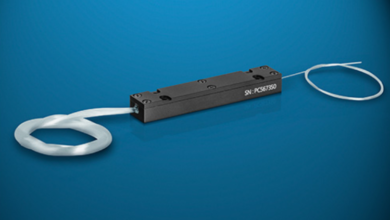Understanding Pigging ROI: Unlocking Value in Modern Pipeline Systems

As industries continue to prioritize efficiency, sustainability, and cost control, investing in advanced technologies is no longer optional—it’s a necessity. One such technology that’s rapidly proving its worth across various sectors is pipeline pigging. While the concept isn’t new, the conversation around pigging ROI (Return on Investment) is gaining traction among manufacturers and production facilities that rely heavily on pipeline systems.
Whether you operate in food processing, cosmetics, pharmaceuticals, oil and gas, or chemical production, understanding how pigging translates to bottom-line benefits is essential. This article explores what pigging ROI means, how to calculate it, and why investing in a pigging system may be one of the smartest decisions for long-term profitability and operational success.
What Is Pigging?
Pigging involves the use of a device known as a “pig” that moves through pipelines to clean, inspect, or recover residual product. This pig is propelled by liquid, gas, or mechanical force, pushing through the pipeline to:
- Recover remaining product from previous batches
- Clean internal pipe walls
- Separate different product types
- Remove contaminants or debris
Modern pigging systems are fully integrated into production lines and are often automated to enhance speed, hygiene, and control. As the technology has advanced, so has its impact—directly influencing how businesses manage resources and profitability.
See also: Smart Home, Smart Living: How Tech Is Transforming Home Upgrades
The Importance of Pigging ROI
When businesses invest in any technology, understanding the return on investment is critical. Pigging ROI refers to the quantifiable value generated by implementing a pigging system, measured against the cost of installation and operation.
Unlike some long-term investments, pigging systems usually offer a relatively fast return. In fact, depending on product value, batch frequency, and production processes, many companies achieve full payback in less than 12–18 months. From that point on, the system contributes to ongoing savings and profit.
Key Drivers Behind Pigging ROI
Let’s break down the primary factors that contribute to a strong pigging ROI.
✅ 1. Product Recovery
Residual product left in pipelines after a production run can add up quickly—especially when dealing with high-viscosity or high-value substances like sauces, creams, or pharmaceutical ingredients.
Example: A 50-meter stainless steel pipeline may hold 20 liters of product. If your product sells for $6 per liter, that’s $120 lost per batch. Multiply that by 200 batches per year, and you’re looking at $24,000 in lost revenue—potentially recoverable with pigging.
✅ 2. Reduced Water and Chemical Use
Traditional pipeline cleaning often requires large volumes of water and harsh cleaning agents. Pigging minimizes this by performing an initial mechanical clean that eliminates most residue, significantly reducing the need for flushing.
This results in:
- Lower utility bills
- Less wastewater generation
- Reduced chemical procurement and disposal costs
These operational savings play a direct role in improving pigging ROI.
✅ 3. Labor and Time Efficiency
Cleaning pipelines manually or using extended flushes can be time-consuming and labor-intensive. Pigging reduces cleaning time dramatically, freeing up labor for more value-added activities and shortening batch changeover times.
Less downtime = more productivity = better ROI.
✅ 4. Equipment Longevity and Maintenance
Residual buildup can damage pumps, valves, and pipe interiors over time. Regular pigging prevents these issues, leading to:
- Fewer maintenance interventions
- Lower repair costs
- Longer equipment lifespan
These indirect savings contribute to long-term pigging ROI.
✅ 5. Product Quality and Safety
Cross-contamination between batches can result in spoiled product, recalls, or quality issues—especially in hygiene-sensitive sectors like food, cosmetics, and pharma. Pigging ensures pipelines are cleared more thoroughly than manual flushing alone, reducing the risk of contamination.
Real-World Applications of Pigging ROI
🧃 Beverage Manufacturer
A juice processing company installs a pigging system to recover residual concentrate in its transfer lines.
- Product Recovered per Batch: 25 liters
- Value per Liter: $4
- Annual Savings: 25 × 300 × $4 = $30,000
- System Cost: $35,000
- Pigging ROI: Payback in 14 months, followed by long-term profitability
🧪 Chemical Blending Plant
Previously relying on solvent flushes between batch runs, a specialty chemical company reduced solvent use by 70% and water by 60% after implementing pigging.
- Annual Savings: $50,000
- System Investment: $60,000
- Payback Period: 15 months
- Improved Sustainability Ratings: Helped secure a major client contract
How to Calculate Your Own Pigging ROI
To assess whether a pigging system makes financial sense, use the following simplified formula:
Pigging ROI (%) = (Annual Benefits – Annual Costs) / Total Investment × 100
Where:
- Annual Benefits include product recovery, reduced utilities, labor savings, and lower cleaning material costs
- Annual Costs include maintenance, energy, and any added operational expense
If your ROI is positive and the payback period is under 2 years, it’s generally considered a solid investment.
Hidden ROI: Environmental and Brand Value
In today’s market, ROI isn’t only about dollars. pigging roi also includes intangible—but valuable—benefits such as:
- Meeting sustainability goals
- Enhancing ESG (Environmental, Social, Governance) ratings
- Reducing carbon footprint
- Building a brand reputation for efficiency and responsibility
These factors may help companies win tenders, attract partnerships, and comply with growing environmental regulations—further supporting long-term ROI.
Final Thoughts: Pigging ROI Is More Than a Number
While traditional investment assessments focus strictly on cost and return, pigging ROI provides a broader picture. It demonstrates how a single technology can deliver value across multiple dimensions—financial, operational, and environmental.
By recovering more product, reducing cleaning needs, and minimizing downtime, pigging allows manufacturers to run leaner, cleaner, and more profitably. And in a competitive, fast-paced industrial landscape, that kind of ROI is not just desirable—it’s essential.






